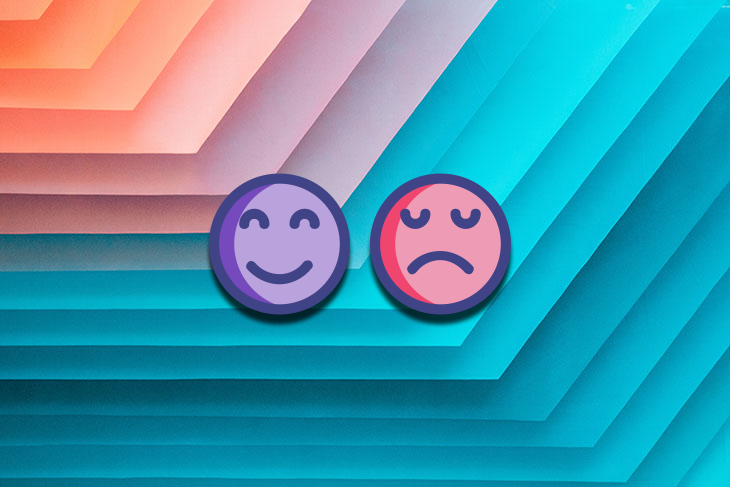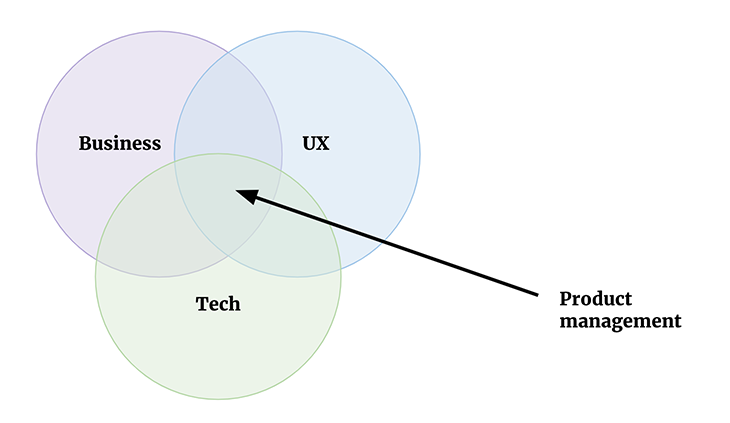As a product manager, you are bound to have a million things on your plate. You’re juggling roadmaps, backlogs, stakeholders, and a whole lot more. But have you ever stopped to think about brand loyalty? You know, that elusive thing that makes customers stick around like glue? If not, here’s your chance to learn more about it.

Brand loyalty isn’t something that always makes it to the top of our priority list, but it’s as crucial to our work as product people. Now, you might be thinking, “Brand loyalty? Isn’t that a marketing thing? Or even customer success?” Well, yes and no.
While it’s true that our business-facing teams often lead the charge in building brand loyalty, we as product managers play a crucial role in this process too. It’s time we started paying more attention to it.
Brand loyalty is when your customers love you so much they wouldn’t dream of going anywhere else.
It is the act of creating a positive association so consumers attach to a particular product or brand, leading them to become repeat customers and, ideally, brand advocates. It’s the holy grail of customer retention and a key driver of sustainable growth.
If we’re looking at the competitive market, think of it as the secret sauce that can not just help you gain traction with new customers (through things like referrals), but continuously expand your market share.
Alright, let’s get down to the nitty-gritty: how does brand loyalty actually impact product management?
When customers are loyal to your brand, they’re more likely to stick with you no matter what (let’s of course be reasonable here.) This is key, as we know that often launches don’t always go as planned. Whether you run into a hiccup, a somewhat embarrassing bug, or an oh-my-god-things-are-on-fire situation (which hopefully won’t happen often!) — loyal customers are more willing to forgive these situations.
Brand loyalty can also supercharge your product development, as loyal customers are often your most engaged users. They’re more likely to join beta testing programs, provide feedback, and help you understand what’s working and what’s not. Work with your marketing and success teams to create community programs that include access to beta features, and not only will you gain insight quickly, but also have the opportunity to build a relationship with your customers.
But that’s not all! Brand loyalty can also have a big impact on your bottom line. Loyal customers are more likely to become repeat customers, which can increase your customer lifetime value (CLTV) and reduce your customer acquisition costs (CAC). They’re also more likely to become brand advocates, spreading the word about your product and bringing in new customers.
As I said earlier, these are not just “marketing” things to worry about. Every product manager must be commercially focused in order to understand how product development is having an impact on the entire organization.
Brand loyalty isn’t just about having a great product, it’s about the entire customer experience. Factors like customer service, price, product quality, and even your brand’s values can all influence whether a customer becomes loyal or not.
If your product doesn’t deliver on its promises, customers aren’t going to stick around. But if your product consistently meets or exceeds expectations, customers will come back for more. It’s as simple as that.
Customer experience also goes beyond just the interactions that the user has with your product. It includes the moment they decided to search for a solution to their problem, landed on your page, and started interacting with your brand. That entire experience must be cohesive from beginning to end (from lead to conversion to retention.)
Think of the product management Venn diagram, there is a reason it exists and it’s not just to highlight where you are. It highlights where everyone else is in relation to you and your role, so be sure to work with your business-facing teams to ensure that customer experience is consistent:

Part of that customer experience is also helping build an emotional connection between user and product. This is done with the help of your product marketing team, finding the right positioning and messaging that elicits the right set of emotions. But as that is happening, it’s important to also create an experience where you are helping the customer become better at what they do.
Whether we are ready to admit it or not, all of our products influence and change behavior. If we can manage to influence and change that behavior for the better, we’re helping our customers build better habits and feel like they’re doing better because of your product.
If you’d like to learn more about this, I highly recommend Natalie Naiha’s Webs of Influence: The Psychology of Online Persuasion and Kathy Sierra’s Badass: Making Users Awesome.
Integrating brand loyalty into the product development process
Alright, so we’ve established that brand loyalty is important, and we’ve identified the key factors that influence it. Now let’s talk about how we can integrate brand loyalty into the product development lifecycle by focusing on key areas — product design, user experience, and customer feedback:

A well-designed product shows that you understand your customer’s needs and pain points. It shows that you’ve put thought into every detail, from the big features down to the tiny micro-interactions. I once worked with a really great designer that said “In design, it’s not just the big things that matter, often the little things matter most.”
But building brand loyalty through product design isn’t just about making a product that looks good. It’s about making a product that works well and solves a real problem for your customers. It’s about creating something that’s not just functional, but also delightful to use. And most importantly, it’s about consistency. These habits need to be consistent not just for the user, but for the process you go through when building things.
UX is like the icing on the cake. It’s what takes your product from good to great, creating an experience that’s intuitive, enjoyable, and memorable.
A great user experience can make your customers’ lives easier, and it can also create a strong emotional connection with your brand (remember what I said earlier, building an emotional connection is important!).
Going the extra mile to surprise and delight your customers and paying attention to the small details that can make a big difference. One of my favorite little delighters ever is Asana’s flying unicorn when you complete a task. Even though I know it’s there, I find it awfully delightful every time!
Finally, let’s talk about customer feedback. We all know customer feedback is important, but too many people focus on how to collect feedback rather than how to organize it, so I do want to tackle that.
Collecting feedback isn’t as crucial as how you triage it later. My take on this is to open as many channels as possible and gather feedback from as many places as you can. The more you limit the way your customers can interact with you, the less likely they’ll be willing to do so.
It is usually at the step of managing and organizing that a lot of product teams have issues. Having a feedback management system can be an absolute game changer here. Keep things tidy and organized, and make sure you’re able to close that feedback loop. The most delightful thing YOU can do for your customer is to thank them, let them know their feedback was heard, and that you managed to implement a change thanks to them. I can’t think of a better way of creating a strong brand loyalty program than through something as simple as a “thank you.”
Ok, let’s talk numbers. Let’s face it, in the world of product management, if you can’t measure it, it might as well not exist.
Brand loyalty is actually a really difficult thing to measure. Experiences are often intangible, but there are some indicators you can look at to gauge how things are going.
This is a big one. Churn rates should give you a clear indicator of customer satisfaction and loyalty.
If your churn rate is high, it’s a sign that you’re not meeting your customers’ expectations and they’re jumping ship.
This metric tells you how many of your customers are using the features you release. High feature adoption rates can be a sign of strong brand loyalty, as it shows that your customers trust your product updates and are willing to try out new things.
This is all about the money. Repeat annual recurring revenue (ARR) or monthly recurring revenue (MRR) measures how much revenue you’re getting from repeat customers. The higher this number, the more loyal your customers are.
This is a metric that allows you to measure the difficulty a user experiences when interacting with a new feature, finding help, or even just navigating through your platform. The higher the difficulty, the more likely it is that you’re creating a negative experience for the user.
Now before we go any further, let’s address the elephant in the room: net promoter score (NPS). You might be wondering why it’s not on this list.
Here’s the thing — NPS is a terrible idea. Yes, it’s a popular metric, and yes, it’s easy to measure. But it’s a single number that doesn’t give you any insight into why customers are behaving the way they are. It doesn’t tell you what you’re doing right, what you’re doing wrong, or what you can do to improve. You can argue some lagging metrics can’t either, but there are better ways of figuring out where the problem is rather than sending a survey that has quite honestly become nothing other than a black pattern.
As product managers, we’re in a unique position to influence brand loyalty. We’re at the intersection of business, technology, and user experience, and we have the power to create products that not only meet our customers’ needs but also build a strong emotional connection.
Let’s embrace this opportunity and put brand loyalty at the top of our priority list. Let’s work closely with our teams, listen to our customers, and strive to create products that people love. At the end of the day, that’s what product management is all about.
Featured image source: IconScout

LogRocket identifies friction points in the user experience so you can make informed decisions about product and design changes that must happen to hit your goals.
With LogRocket, you can understand the scope of the issues affecting your product and prioritize the changes that need to be made. LogRocket simplifies workflows by allowing Engineering, Product, UX, and Design teams to work from the same data as you, eliminating any confusion about what needs to be done.
Get your teams on the same page — try LogRocket today.

A practical framework for PMs to use AI in ideation without sacrificing judgment, strategy, or decision quality.

A practical five minute revenue estimation method to help product managers compare ideas, drop low impact features, and prioritize smarter.

A practical guide for PMs who want to stop being bottlenecks, delegate smarter, and lead teams effectively with a clear ownership framework.

Stop letting unreliable data block features. Treat data as inventory to track quality, ownership, and ship with confidence.